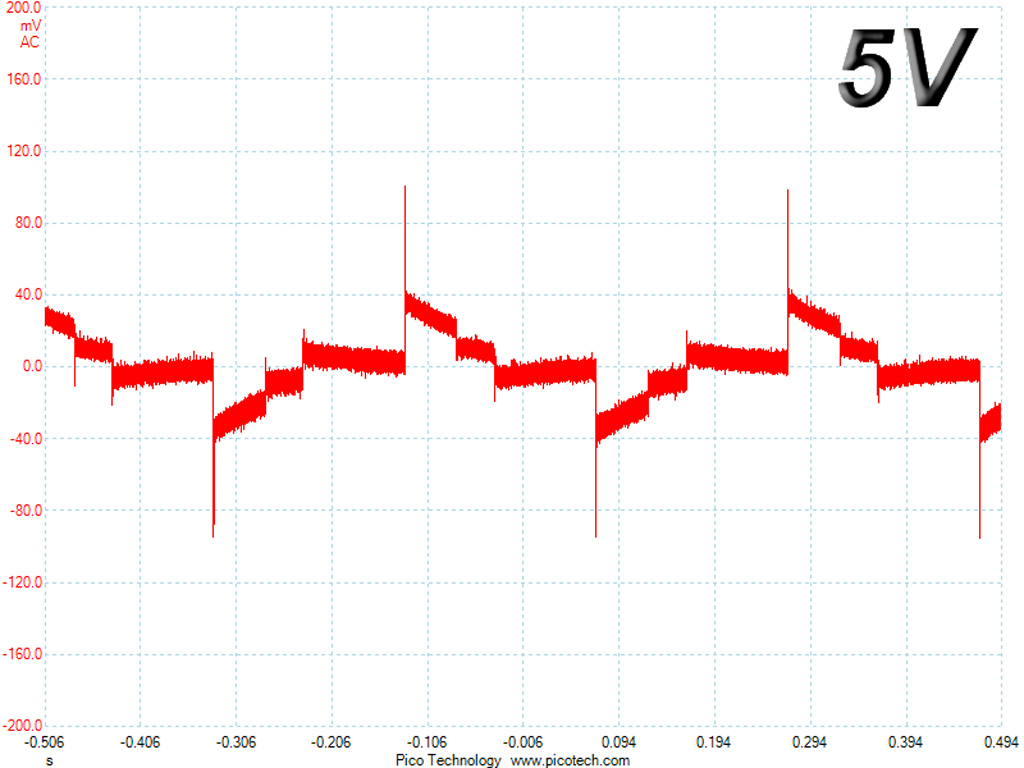In Win Classic Series C 900W PSU Review
In Win's Classic series consists of only two members featuring 750 W and 900 W capacities. The C900 is our test subject today. Besides a great finish and good looks, it promises reliable and quiet operation, along with high efficiency.
Why you can trust Tom's Hardware
Transient Response Tests
Advanced Transient Response Tests
For details on our transient response testing, please click here.
Ιn these tests, we monitor the C900's response in two different scenarios. First, a transient load (10 A at +12V, 5 A at 5V, 5 A at 3.3V and 0.5 A at 5VSB) is applied for 200 ms while the PSU works at 20 percent load. In the second scenario, it's hit by the same transient load while operating at 50 percent load. In both tests, we use our oscilloscope to measure the voltage drops caused by the transient load. The voltages should remain within the ATX specification's regulation limits.
These tests are crucial because they simulate the transient loads a PSU is likely to handle (such as booting a RAID array or an instant 100 percent load of CPU/GPUs). We call these tests "Advanced Transient Response Tests," and they are designed to be very tough to master, especially for power supplies with a capacity of less than 500 W.
Advanced Transient Response at 20 Percent
| Voltage | Before | After | Change | Pass/Fail |
|---|---|---|---|---|
| 12V | 12.278V | 12.080V | 1.61% | Pass |
| 5V | 5.080V | 4.982V | 1.93% | Pass |
| 3.3V | 3.330V | 3.205V | 3.75% | Pass |
| 5VSB | 4.976V | 4.945V | 0.62% | Pass |
Advanced Transient Response at 50 Percent
| Voltage | Before | After | Change | Pass/Fail |
|---|---|---|---|---|
| 12V | 12.168V | 12.068V | 0.82% | Pass |
| 5V | 5.030V | 4.937V | 1.85% | Pass |
| 3.3V | 3.292V | 3.161V | 3.98% | Pass |
| 5VSB | 4.928V | 4.883V | 0.91% | Pass |





Under light loads, the C900's resonant controller operates the primary switching FETs in PWM mode, so deviations during the first test are very high at +12V. The primary FETs operate in FM mode during the second test, so the transient loads are handled better. This is clearly shown by the <1% deviation on the same rail. The 5V and 5VSB rails fare pretty well, while the 3.3V rail is left behind with close to 4% deviations in both cases.
Here are the oscilloscope screenshots we took during Advanced Transient Response Testing:
Transient Response At 20 Percent Load




Transient Response At 50 Percent Load




Turn-On Transient Tests
In the next set of tests, we measure the PSU's response in simpler transient load scenarios—during its power-on phase.
For the first measurement, we turn off the PSU, dial in the 5VSB rail's maximum current, and switch the C900 back on. In the second test, we dial the maximum load the +12V can handle and start the PSU while it's in standby mode. In the last test, while the C900 is completely switched off (we cut the power or switch the power supply off by flipping its switch), we dial the +12V rail's maximum load before switching the PSU on from the loader and restoring power. The ATX specification states that recorded spikes on all rails should not exceed 10 percent of their nominal values (+10 percent for 12 V is 13.2 V, and 5.5 V for 5 V).
Get Tom's Hardware's best news and in-depth reviews, straight to your inbox.



There is a small voltage overshoot at 5VSB that's much lower than the limit, so there is nothing to worry about. We also see a small spike at +12V during the last test, which is also insignificant.
Current page: Transient Response Tests
Prev Page Cross-Load Tests And Infrared Images Next Page Ripple Measurements
Aris Mpitziopoulos is a contributing editor at Tom's Hardware, covering PSUs.